Ridgeland Harvest – Transcript
– Announcer: This week on Wisconsin Foodie.
– Ridgeland Harvest is primarily a community-supported agriculture farm.
– Well, I guess, it kind of goes back to our main mission statement was first to feed ourselves, our family and our community.
– Good morning!
– Morning!
– How are you?
– Oh, good.
– As you guys are picking, how many do you eat while you pick?
– Ooh, depends on what time of day.
The closer to lunch, the more.
– The more.
[laughs]
So tonight, on the farm, the idea is to create a dinner using a majority of ingredients that come actually from the farm itself.
The food has been picked. We’ve taken it back to the caf, we’ve done our preparations, and now we’re ready to make sure that the love and care that these farmers have put into growing this food is translated into the dinner service. I hope you enjoy it.
[guests applauding]
Thanks.
– Narrator: Wisconsin Foodie would like to thank the following underwriters for their support:
The Dairy Farmers of Wisconsin are proud to underwrite Wisconsin Foodie and remind you that in Wisconsin we dream in cheese.
[crowd cheering]
Just look for our badge. It’s on everything we make.
Employee-owned New Glarus Brewing Company has been brewing and bottling beer for their friends, only in Wisconsin, since 1993. Just a short drive from Madison, come visit Swissconsin, and see where your beer is made.
Milwaukee’s landmark art deco hotel offers luxury accommodations, legendary hospitality, and world-class dining. Paired with the hotels roaring ’20s vibe makes The Ambassador a must-experience destination.
From production to processing, right down to our plates, there are over 15,000 employers in Wisconsin with career opportunities to fulfill your dreams and feed the world. Hungry for more? Shape your career with these companies… and others at FabWisconsin.com. Society Insurance. Small details. Big difference.
Edible Milwaukee magazine.
Also, with support of the Friends of Wisconsin Public Television.
[light jazz music]
[car humming]
[chickens cackling]
[liquid splashing]
[vegetables crunching]
[fruit popping]
[meat sizzling]
[lively jazz music]
[rhythmic jazz music]
[gentle guitar music]
[tractor engine rumbling]
– Cate: Growing up in the city, I had really a country life. I grew up in a suburb of St. Paul. My mom was a stay-at-home mom, and my dad was a teacher, and they loved gardening. So we had a raised garden. We had a community garden right in the back of where we lived. We didn’t buy vegetables at the store. We just had canned stuff, frozen things.
Ridgeland Harvest is primarily a community-supported agriculture farm. Mat and I met at the University of Wisconsin-Stevens Point where we were both students, and we wanted to be, I don’t know, people that tried to make the world something better. And I think as we grew a garden, we saw, wow, we can actually grow a lot of food in just this little space, but we felt like there was something that we could do more. So that drive, I think, to challenge ourselves and say how can we continue to give back to our community, working with our hands, being in the environment that we both grew up loving and respecting. And we started really small, by just being at the Viroqua farmers market with a little stand, and some of our customers said, “Why don’t you do a CSA?” And we said, “Well, we really are trying to gain more experience.”
– Mat: Well, I guess it kind of goes back to our main mission statement, was first to feed ourselves, our family, and our community, you know, so our mission is to just connect people with food. 1/2 to 2/3 of our income is from our CSA customers. That’s why we grow the 45 different varieties of crops. But then we do do some wholesale up to the Twin Cities, food cooperatives and a few restaurants in the La Crosse area. What makes that a good one, John?
– It’s big.
– It’s big?
– And fat.
– And it doesn’t have any holes or anything on it.
– Our kids, they’re nine and 11, and this year, they’ve been an amazing help. This year, they’re trying a little venture of pickin’ the hot peppers. Last year, we grew a bunch of different varieties of hot peppers, and they really got excited about it, a jalapeo, a habanero, and then the ghost pepper.
[lively fiddle music]
[water pressure releases]
[motor switch clicks]
– Right now, we’re harvesting nearly every day. On a wash day, you’re seeing lots of different crops that come in and out of the water, come in and out of the cooler. It’s fresh, you can smell the aromatic sense of like a celery root being washed, and it really does fill the entire shed. When we think of the time lapse of products goin’ out, it’s maybe be a Monday harvest, typically washing things like on a Tuesday, and then things are goin’ out on Wednesday, Thursday. So you’re talkin’ three days from field to table, and I think that’s a really pretty good turnaround in terms of freshness and not traveling 1,200 miles but at most a 90- to 100-mile range.
So this is our 15th season of doing CSA. So community-supported agriculture is a model that is a symbiotic relationship between the farmer and the eater. And the eater is participating by financially supporting the farm through a pre-season investment, and then in return, we pay them back their investment in vegetables. And it’s always our goal to go over that investment amount because community-supported agriculture checks coming in in January and February literally means we can pay the electric bill. I mean, those beginning checks are super essential.
So I’m just preparing our market stands, which is what’s right outside the farm, and neighbors, passer-bys, travelers, and people stop by, they get fresh eggs, they come and grab what they want, have a little pay box and load up their cars. You guys good?
– Boy: Move the packing shed.
– Mat: Move the packing shed?
[laughs]
Yeah, that would work.
Okay, here’s some. You outdid me. Carried more than I did.
More back?
– Cate: A tiny bit more.
[truck engine rumbling]
– Luke: All right, we’re in the truck, and we’re on the way to Ridgeland Harvest farm. Ridgeland Harvest holds a really special place in my heart. Mat and Cate and John and Paul have kind of followed the same career arc that I’ve experienced. This farm is located just west of Viroqua, and they were the farmers that actually taught me how important my connection to local farmers are in sustaining families. They are amazing people, and I really can’t wait to get out and see ’em again.
– Yep.
– Boy: Oh, it’s Luke.
– Good morning!
– Morning!
– How are you?
– Oh, good!
– All right, hey, Buckley, hi!
– Mat: Good to see you.
– Thanks a lot. Thanks.
– Cate: Hey!
– Luke: Thanks for having me out here. We really appreciate this.
– Cate: We’re excited.
– Luke: Well, what we have to do?
– Cate: We’ve got to get some vegetables. We do need to catch up on some more things for the stands, some peppers.
– Mat: And then get a few things for your dinner tonight.
– Luke: Great, I got a small shopping list that I want to be able to pull out of the fields. Should we go check it out?
– Mat: So yeah, the tomatoes are just comin’ on. We started pickin’ cherry tomatoes last week. The sun golds are usually the first. But it’s always so critical to get out and find ’em. They’re so precious. So you don’t want to miss those first ones.
[Luke laughing]
– Cate: But they’re really low.
– They’re low, and you’re like kind of under the plant walking, searching.
– Mat: Ape walk.
– Luke: Ape walking?
– Mat: It’s a lot of this, peppers.
– Cate: People want to kneel and stop, but that’s not efficient. You got to keep goin’. So it really is an ape walk.
– Mat: And we’re not growin’ the kind that you can mechanically harvest. Everything’s hand– Done by hand, you know?
– Luke: I think my ape walk needs work.
[all laughing]
– As you guys are picking, how many do you eat while you pick?
– Mat: Ooh, depends on what time of day.
[both laughing]
The closer to lunch, the more.
– The more.
– Yeah.
– Man, I love that smell. I love it.
– Cate: Isn’t that great?
– Mat: Nothin’ like summer.
– Luke: So why vegetable farming?
– Cate: Well, we were vegetarians.
– Yeah, that helped.
[all laughing]
– That is great, thank you.
– I don’t know, I think love of gardening, really. ‘Cause it wasn’t like make millions, or you know, become 25 acres of produce. It was just a simple little goal. And I think when you put your blood, sweat, and everything out there knowin’ that it could be destroyed in one rain event or one storm, you’re going to be humble. When you ape walk down the row, it’s going to humble you. So, it’s really important that we have awesome chefs like yourself, and you know, you have the public’s ear right now. People love chefs. And so the work you guys are doin’ is really impactful.
– Luke: Thanks.
[calm guitar music]
All right, let’s get some peppers!
Why do you choose the real environment? I mean, it would seem like you could control a lot more in a greenhouse setting, for you. What is it?
– Mat: Why don’t you use fake vanilla?
[Luke laughs]
‘Cause you have control, right?
– Have control, right, exactly.
– Mat: But there’s all the unknowns. The things you don’t know that affect it.
– Yep.
– You know, recently, the focus was on organic rather than knowing your farmer. And I think, so we have Amazon that can shrink-wrap and mail you organic produce. It’s organic, but is it organic, you know? Is it from the soil, is it living still when you get it on your plate? And I think now we’re, people are starting to realize maybe there’s drawbacks to that corporate fresh food model.
– A lot of times at the caf, people ask how we develop the cuisine or how do we do it, and I’m always a little perplexed as to how to answer that one.
But the analogy that I like to give is that we’re painters. And I am so humble that I get to work with this paint.
This is my art. This is Wisconsin.
[calm guitar music]
All right.
– Think you got enough?
– I think I’ve got enough, look at this thing. If Peter Piper picked a peck, we picked a whole bucket.
[all laughing]
Luke: I don’t really know what that means. Anyway, I’m gettin’ a little short on time. Is it cool if I split back for the restaurant?
– Yeah.
– Okay, great. Thanks.
Luke: So, tonight on the farm, the idea is to create a dinner using a majority of ingredients that come actually from the farm itself. Always with these things, whenever we’re takin’ the show on the road, time becomes the critical factor. We have a couple prep pieces that we have to kind of finish and figure out, but then some of the really like not fun part of this is like making sure all the equipment is loaded, making sure the packing lists have been double-checked. Okay, how’re we going to split this?
– In half, Luke.
[Luke laughs]
– Okay, you’re still on the corner. Okay, watch this side.
– Man: I got to slide it this way some.
– There we go.
– Here we go.
– Man: You got all your muscle down at the bottom.
– Luke: Nice!
– The plastic.
– Okay, here we go.
Let’s just check in here quick. How is everybody?
– Employee: Great, how are you?
– I’m good, thank you. This is Organic Prairie pork ribs. Yeah, that’s what I’m talkin’ about. The ones we’re doin’ tonight on the farm, a little bit different, fennel, coriander, sugar, smoked paprika, salt, black pepper. Keepin’ it simple, trying to keep it tastin’ like a walk in the forest.
All right, what do we have here? This is the sauce tonight for the ribs. Strawberries, blackberries, both coming from Scenic Valley Farm which is located in Readstown, so about, I don’t know, about eight miles from where we are right now. We have some habaneros from John and Paul at the farm and a little bit of Sweetwater Maple.
Those habaneros are not messin’ around.
– How are you?
– Good, how are you?
– Good. Okay, let’s mise en place this thing up. These are blue potatoes from Driftless Organics, blue gems. I should have beans.
– Four beans.
– Perfect. Now at this point, I like to hit it one more time, salt, black pepper, a little bit of chili flake. Let’s do garlic until the garlic gives out, okay? Then, cisco, all right. Super beautiful white fish. So season the fish up. Lay that on top.
Down, shiso. You guys know what shiso tastes like?
– Like a minty, almost.
– I think it has like that anise-y, kind of like licorice-y note, yep. Butter, so that’s like the pack. That’s what we want ’em all to look like. But we’re going to throw a little bit of white wine on there. Like the kiss of death that I see young cooks do when the make parchment is they wrap it super tight, and you don’t really get the flavors to kind of amalgamate. So that would be our finished papillote, right?
– Mm-hm. So lookin’ at the watch, it is now exactly one o’clock. So we have guests arriving at four o’clock out on the farm. We’re hittin’ our marks here pretty soon, make sure that we have all the pieces that we’re going to need before we actually leave the venue.
[lively guitar music]
One of the tricks of this is being able to run a restaurant and do off-site events at the same time takes a tremendous staff, and I have literally one of the best staffs in the business. And it’s always a shoot when you are rollin’ the dice and you’re trying to write a farm-to-table menu months in advance, what’s going to be available, or what would we want to be available. And I put sweet corn and watermelon on this menu, thinking like, okay, it’s gettin’ close to the end of July here. I was startin’ to panic a little bit, like how are we going to change this and alter this, and as I was driving by the hardware store down here, this Amish family had sweet corn. And I literally hit the brakes, pulled into the parking lot, and said, “How many ears do you have?” And they’re like, “Well, we have about 12 dozen.” And I bought ’em all immediately. It’s that kind of community piece that like makes this food I think so interesting, but also so unique. It’s not like we’re going out and we’re saying to farmers, hey, I want you to grow one type of onion or five types of tomato or one type of kale. We really thrive on the fact that they’re going to grow whatever works best for them, and we’re going to collect all those pieces and try and put ’em together in this, you know, this beautiful portrait, if you will, of being present and in the moment right here and right now.
[lively fiddle music]
[sausages sizzling]
All right, it’s 3:30, right now we are about half an hour from the guests arriving at the Ridgeland Harvest farm, and we are in the process of putting together the final touches. The food has been picked, we’ve taken it back to the caf, we’ve done our preparations, and now we’re ready to make sure that the love and care that these farmers have put into growing this food is translated into the dinner service. We’re excited, the beer is here, the drinks are starting to flow, let’s make this thing happen. Hey, Dave.
– Hey, Luke.
– How’s it goin’?
– Good, how are you?
– Good to see ya. Thanks for comin’ out.
– Yeah, thank you for havin’ us.
– Oh, man, we appreciate it.
– How long have you been with Hillsboro?
– Been brewing beer for Hillsboro since 2013.
– Okay, so Hillsboro, geographically is located east.
– On the very edge of the eastern part of Vernon County.
– Sure, and how many different varieties do you guys produce?
– We have like eight staples that we do. And then we’re always kind of rotatin’ some other ones in. Like right now, today we did bring our Oktoberfest that just got done, Bohemian Club, which is our Pilsner beer which is one of your favorites at the Driftless Caf.
[Luke laughs]
Here we are.
– Cheers.
– Cheers!
– Thanks a lot.
– Thank you.
– Man, that’s so good.
– Nice and refreshing. Can you taste that hops kind of comin’ through at the end there?
– I think there’s something really amazing and wonderful about like a nice, crisp, clean finish on a beer. I mean, it’s fantastic.
– Dave: Something that you can have another one, and your taste buds haven’t been ruined.
[laughs]
– Exactly, exactly, ’cause I’m definitely a one to two beer type of guy.
[laughing]
So cheers to you. Thanks a lot.
– Cheers. Thank you.
– Awesome.
[lively instrumental music]
[guests chattering]
So what we’re doin’ right now, we’re getting to the point where we need to set up the cheese and charcuterie boards. We’re going to put out some of the finest cheeses that Wisconsin has to offer, just a few of ’em. We could go all day. LaClare Farms Evalon, I love it. I think it’s a really nice balance between nuttiness and creaminess. So the blue cheese is Organic Valley’s Kickapoo Blue. I love it because it’s a little sweeter. It’s got some elements of almost Gorgonzola in its sweetness. Charcuterie right here, this is the first one. So saucisson sec, very lovely, very classic French sausage. This next one here, this is our loukanika, a Greek sausage characterized by garlic, cumin, and orange zest. And then last but not least, we’re going to do a culatello. It’s a ham inside of a ham. All this is done in-house at the Driftless Caf. This is part of the charcuterie program that is also known under the name Driftless Provisions, and we’re really excited to share this stuff with the world.
We’re going to let you guys nosh on this for a little bit. So we want to you enjoy the cheese, enjoy the charcuterie, enjoy the beer. Before I get too far, though, I would like that Mat and Cate and John and Paul, I’m going to ask you guys to stand up.
[guests applauding]
These are your host farmers, and this whole dinner is actually a love letter to summer and how this food actually creates identity and gives us a sense of purpose and meaning. And today, it’s my honor to share that love and food with you. So please, one more round of applause for Mat and Cate.
[guests applauding]
All right, so what you’re looking at here, this is almost like a deconstructed ratatouille, zucchini, eggplant, summer squash, purple beans from the farm, grilled ’em off. What we’re putting on now, what you’re seeing come off in ribbons, this is an egg yolk mousse. So we’ve taken cooked eggs and we separate the whites, and we whip it with a little bit of hot water. So this is ricotta, we’re getting it on the salad so that everybody gets a little bit, and putting it out.
[calm guitar music]
All right, we put this one together like a present, right? This fish that you’re eating right now, cisco, they’re really, really rare, but we get this from Grand Marais. And I thought that by combining it with the beans, some potatoes from Driftless Organics, we just tried to create something to steam together with that fish and perfume it all together so it could be like a present for you guys to open up. I hope you enjoy it.
[guests applauding]
Thanks. The dinner’s going really well. I never trust that people would tell me if it wasn’t, but I’ve been eating the food in the back, and I think it’s really, really good. It seems like everyone’s happy, the beer is delicious, everyone seems to be enjoying themself.
The pork ribs come from the Organic Meat Company, the OMC, which is Organic Prairie’s meat line. The sauce on the ribs I think is maybe one of the most exciting pieces of this entire dish, right? Because I got yesterday, this little bag of habanero peppers from two enterprising young farmers, and we went back to the caf and we had some strawberries, we had some blackberries, I got a whole lot of maple from Sweetwater Maple, and literally spun that together with just a little bit of lemon juice and salt, and that’s what’s gracing the ribs right now.
[calm guitar music]
Being able to cook with ingredients that are grown with such love and care and showcase the farmers and tell the story of the food to an audience who’s excited to hear it.
For me, it helps shade in pieces of my own identity, why I’m here doing this. It’s one of those integrated stories, right? This is who we are, this is where we’re from. And I’m asking you, when you go to the store the next time, please, remember this, remember that family.
Think about where your food comes from. It’s the most important thing we’ve got.
[calm guitar music]
[upbeat jazz music]
[guests chattering]
– This food is fantastic.
– Adding tomatoes to it.
– You going to take a bite?
– Oh, yeah.
– Guest: Well, I don’t know about that.
– That’s crazy, that was a big bite.
– Can’t you feel it now? You’re feelin’ it now!
[chatter]
– Oh, he’s feeling it now!
– I don’t know, he knew he was going–
[guests laughing]
– Holy cow.
– There you go, there you go!
– Whoa!
[guests laughing]
– You’ll be shavin’ that beard.
– Ah, no way.
[guests laughing]
– One bite is good, right?
– He ate a ghost pepper.
– Those are really good.
– And a habanero.
– Aren’t they good? I mean, they have really good flavor.
– Oh, they’re delicious, they’re just hot.
– I gave you the big one.
– Good.
[laughter]
– Habaneros!
[guests laughing]
– Have water, have water.
[guests laughing]
– Narrator: Wisconsin Foodie would like to thank the following underwriters for their support:
The Dairy Farmers of Wisconsin are proud to underwrite Wisconsin Foodie, and remind you that in Wisconsin we dream in cheese.
[crowd cheering]
Just look for our badge. It’s on everything we make.
Employee-owned New Glarus Brewing Company has been brewing and bottling beer for their friends, only in Wisconsin, since 1993. Just a short drive from Madison, come visit Swissconsin and see where your beer is made.
Milwaukee’s landmark art deco hotel offers luxury accommodations, legendary hospitality, and world-class dining. Paired with the hotel’s roaring ’20s vibe makes The Ambassador a must-experience destination.
From production to processing right down to our plates, there are over 15,000 employers in Wisconsin with career opportunities to fulfill your dreams and feed the world. Hungry for more? Shape your career with these companies… and others at FabWisconsin.com. Society Insurance, Small details. Big difference. The Wisconsin Department of Natural Resources.
The Central Wisconsin Craft Collective.
Something Special from Wisconsin. Illing Company.
Edible Milwaukee magazine.
Also, with support of the Friends of Wisconsin Public Television.
For more information about upcoming Wisconsin Foodie special events, dinners and tours, please go to WisconsinFoodie.com. There you can sign up for our mailing list to be the first to know about our events and offerings. Also, get connected with us through Facebook, Instagram and Twitter.
[light jazz music]
Search Episodes
Related Stories from PBS Wisconsin's Blog

Donate to sign up. Activate and sign in to Passport. It's that easy to help PBS Wisconsin serve your community through media that educates, inspires, and entertains.
Make your membership gift today
Only for new users: Activate Passport using your code or email address
Already a member?
Look up my account
Need some help? Go to FAQ or visit PBS Passport Help
Need help accessing PBS Wisconsin anywhere?

Online Access | Platform & Device Access | Cable or Satellite Access | Over-The-Air Access
Visit Access Guide
Need help accessing PBS Wisconsin anywhere?

Visit Our
Live TV Access Guide
Online AccessPlatform & Device Access
Cable or Satellite Access
Over-The-Air Access
Visit Access Guide
 Passport
Passport





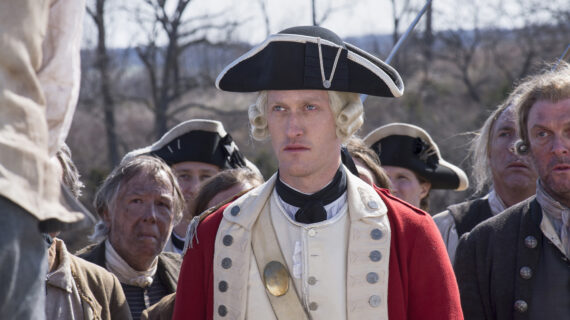

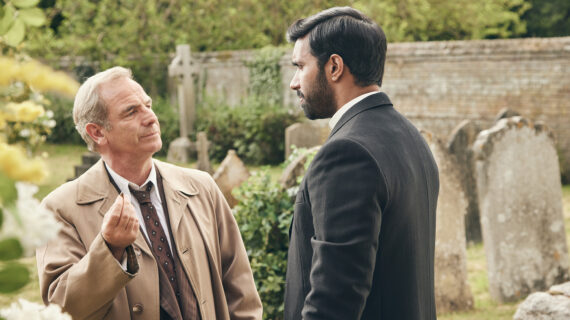


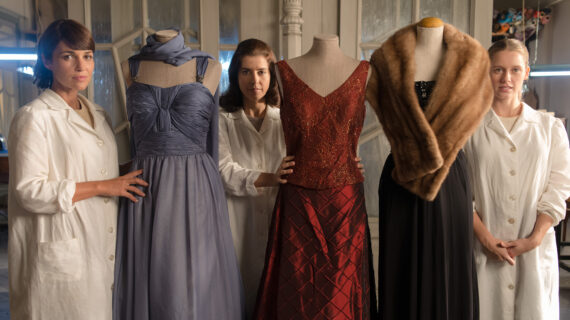
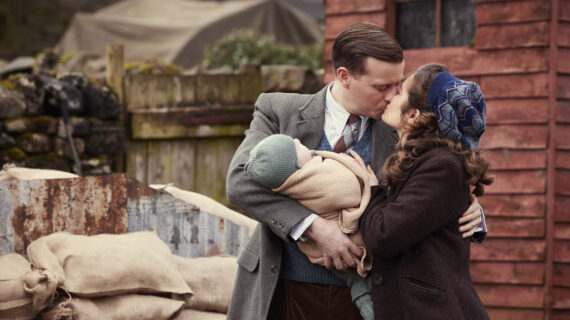

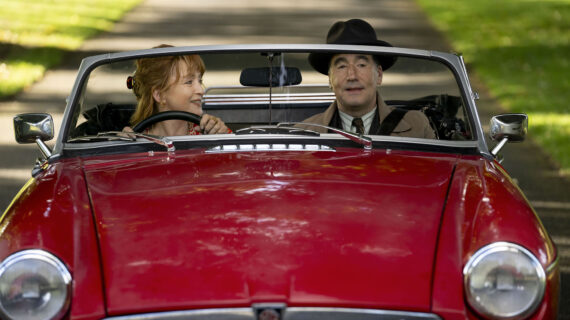

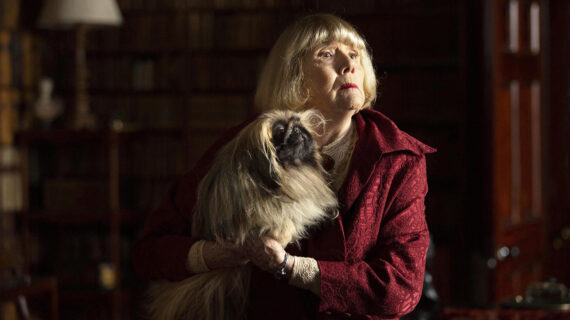

Follow Us